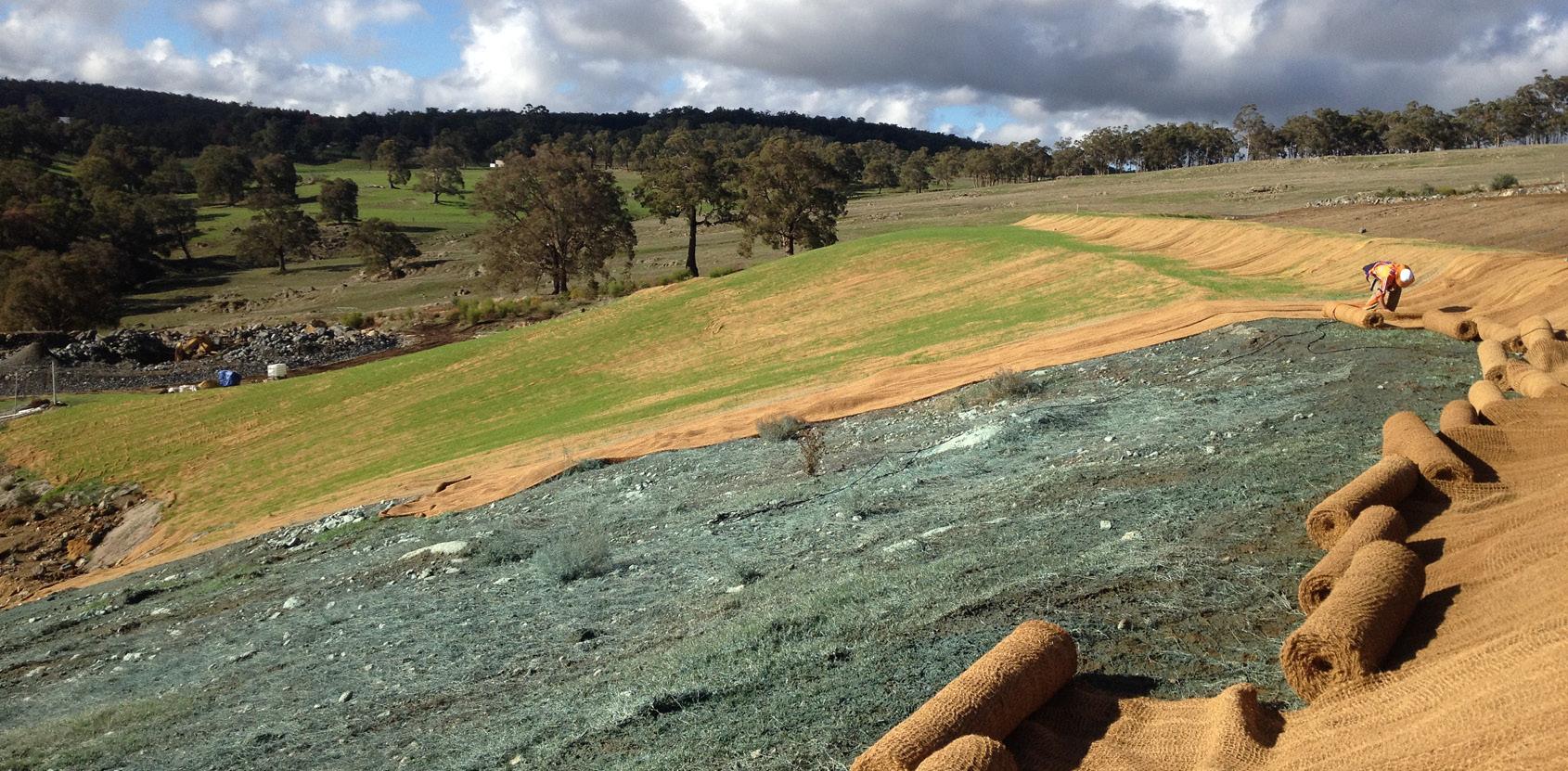- May 9, 2025
- Posted by: wellcoindustries
- Categories: Erosion Control, Jute Mesh
Introduction
Healthy topsoil is the foundation of profitable agriculture and compliant construction sites, yet storms can sweep years of investment downstream in minutes. Builders and growers are increasingly pairing jute netting and irrigation to keep soil in place while seed establishes, satisfy regulators, and shrink water bills. Wellco Industries—a vertically integrated supplier of FRP, agricultural and household materials—bundles natural‑fiber blankets with smart‑watering hardware so project managers can source everything through one reliable channel.

Understanding Soil Erosion and Water Management Challenges
Common causes of erosion on farms and construction sites
Unprotected slopes, bare furrows, and freshly graded pads invite raindrop impact and sheet flow. Tractor traffic compacts soil, reducing infiltration, while heavy machinery on road embankments leaves surfaces slick. Wind and sudden downpours can remove as much as 5 t/acre in a single event.
The economic & environmental toll of unchecked runoff
The United States loses about $44 billion annually to soil erosion in lost productivity, sediment removal, and water‑quality damage. Nutrient‑laden silt clogs drains and triggers costly EPA violations. For purchasing managers, erosion fines and re‑grading aren’t line‑item surprises—they are margin killers.
How Jute Netting Mitigates Erosion
Biodegradable fiber matrix: physical mechanism explained
Woven jute fibers create a coarse, open lattice that hugs the ground, diffusing raindrop energy and anchoring seed and mulch. As moisture and microbes break fibers down, organic matter remains, boosting soil structure without synthetic residue.
Field‑tested results: up to 99 % sediment reduction
A Czech field trial found that a 500 g m⁻² jute blanket cut soil loss by 99.4 % compared with bare control plots. Similar studies on highway slopes report 60–90 % reductions, proving that the simple mat punches above its weight.
The Role of Efficient Irrigation in Soil Stability
Maintaining optimal moisture to prevent crusting and rill formation
Dry crusted soil shatters under rainfall, but evenly moist ground resists splash. Drip and micro‑spray systems deliver gentle, targeted water that preserves aggregates and encourages root growth—nature’s own rebar.
Smart irrigation technologies contractors rely on
“Sensor‑guided drip lines cut our water use by half and virtually eliminated post‑storm silt‑fence repairs,” notes a vineyard operations manager in California’s Central Coast. IoT controllers can reduce water use by 40 %–70 %—and the resulting runoff—according to industry analyses.
Synergy: Integrating Jute Netting and Irrigation for Maximum Impact
Step‑by‑step installation & scheduling checklist
-
Grade and de‑rock the slope; broadcast seed.
-
Roll jute netting from upslope to downslope, pinning with 10 cm soil staples every 1 m.
-
Position drip tape or micro‑spray lines beneath the blanket.
-
Program irrigation to maintain 60–80 % field capacity until vegetation canopy closes.
Anonymized 20‑acre vineyard case study: 72 % runoff drop in 6 months
In a coastal vineyard, managers over‑laid jute netting and converted overhead sprinklers to drip. Rain‑event runoff sampling showed turbidity fell 72 % and repair hours dropped 40 % in the first season—while clusters averaged 12 % higher Brix due to steadier soil moisture.
Key performance indicators to monitor post‑installation
-
Sediment mg L⁻¹ at silt‑fence outlets
-
Soil‑moisture tension or volumetric content
-
Vegetative‑cover percentage (via drone photogrammetry)
-
Blanket decomposition rate versus projected life
Selecting Reliable Materials and Partners
Performance specs: weave density, roll width, biodegradation timeline
Specify 500–700 g m⁻² weight, 4 cm × 4 cm aperture, UV‑stabilized stitching, 1.22 m or 2.44 m roll widths, and 12–24 month functional lifespan.
Supplier checklist — how Wellco Industries simplifies global sourcing
Wellco controls spinning, weaving, and finishing under one roof, bundles blankets with smart‑irrigation kits, and offers OEM labeling—reducing container loads and paperwork.
Lifecycle cost vs. upfront price: budgeting tips for buyers
Combine blanket price ($0.55–$0.75 m⁻²) with avoided regrading, fines, and water savings. A 5 % premium for integrated supply can return three‑fold labor savings.
Conclusion
Pairing jute netting and irrigation tackles erosion at its two roots: mechanical detachment and excess flow. Professionals who align cover, water, and monitoring achieve compliant sites and healthier crops without synthetic waste. Contact Wellco Industries for technical specs, samples, or a consolidated quote that keeps your project—and topsoil—on solid ground.
Frequently Asked Questions
Q1. How long does jute netting last before it biodegrades?
Most blankets hold together for 12–24 months—long enough for vegetation to establish—then decompose into organic matter.
Q2. Can I retrofit smart irrigation under existing jute blankets?
Yes. Insert drip lines in shallow furrows alongside rows and pin the blanket back down; water seeps through the fiber matrix.
Q3. Will jute netting affect soil pH or nutrients?
The fibers are essentially neutral and add a small amount of carbon as they break down, supporting microbial activity without altering pH.
Q4. What maintenance is required after installation?
Inspect after the first heavy rain to re‑pin any lifted edges, then check moisture sensors weekly to fine‑tune irrigation schedules.
Q5. Does combining these solutions qualify for conservation incentives?
Many NRCS EQIP and CSP programs reimburse erosion‑control blankets and water‑efficiency upgrades; consult your local conservation office for details.
